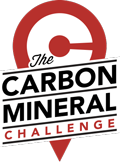FAQs
- What is a mineral?
- What is a carbon mineral?
- What is the Carbon Mineral Challenge?
- Who is in charge of the Carbon Mineral Challenge?
- I’m an amateur or professional mineral collector. How do I get involved?
- Why look for carbon minerals?
- How many carbon minerals are awaiting discovery?
- Where should I start looking for new carbon minerals?
- What is mineral ecology or mineral evolution?
- What is the duration of the Carbon Mineral Challenge?
- What do I do if I think I’ve found a new carbon mineral?
- What do I do once my new carbon mineral has been verified by the International Mineralogical Association?
- How often are new carbon minerals discovered?
- Is there a prize for discovering a new carbon mineral during the Challenge?
What is a mineral?
A mineral is a naturally occurring inorganic solid with a crystalline structure and a definite chemical composition. The chemical composition is what gives a mineral its unique characteristics and allows us to identify it. Each of the more than 5000 minerals has it’s own unique chemical fingerprint.
What is a carbon mineral?
A carbon mineral is a mineral that contains the element carbon in its chemical composition. Diamond and calcite are examples of carbon minerals.
What is the Carbon Mineral Challenge?
The Carbon Mineral Challenge is a four year search for new carbon minerals. It sets the stage for both professional and amateur mineral collectors to make their mark by discovering never-before described minerals. New research predicts at least 145 of Earth’s carbon-bearing minerals remain undiscovered. The Carbon Mineral Challenge was started to focus attention on these minerals and increase their rate of discovery. Read a detailed account of the origins of the Challenge.
Who is in charge of the Carbon Mineral Challenge?
The Carbon Mineral Challenge is sponsored by the Deep Carbon Observatory (DCO). DCO Executive Director Robert Hazen (Carnegie Institution of Washington, USA) came up with the idea for the Challenge as a way to address one of DCO’s guiding questions: what are the forms of carbon on Earth? Hazen enlisted his colleague at Arizona State, Robert Downs, and fellow Carnegie mineralogist Dan Hummer to head up the challenge, with the ongoing support of DCO.
I’m an amateur mineral collector. How do I get involved?
Amateur and professional mineral collectors should follow the procedures outlined by the International Mineralogical Association Commission on New Minerals, Nomenclature and Classification. Once the commission has approved the new mineral, the team responsible for its discovery and verification should submit its entry to the Carbon Mineral Challenge via mineralchallenge.net. Interested collectors may contact Carbon Mineral Challenge International Advisory Board members in their region with questions about mineral analysis and verification.
In addition, professional mineralogists with laboratory expertise in mineral verification should contact josh_wood@uri.edu to register as a partner laboratory.
Why look for carbon minerals?
Carbon is one of the most chemically diverse elements, and occurs in compounds with almost every element of the periodic table. Some carbon-containing minerals form ores, which are mined for metals such as iron, nickel, and copper. Carbon-bearing minerals can contain rare Earth elements, critical components of smart phones and tablets. Carbon also becomes coal and diamond. And, most importantly, without carbon, there is no life. Earth is the only known planet that supports life. Life on Earth has interacted with rocks over billions of years, generating a telltale geobiological footprint. Such a footprint should be visible on other life-supporting planetary bodies .
How many carbon minerals are awaiting discovery?
Mineralogists recognize a growing list of carbon minerals. DCO researchers now estimate there are at least 145 more carbon minerals still awaiting discovery.
Where should I start looking for new carbon minerals?
While there is no treasure map for finding the missing carbon minerals, there are some potentially rewarding localities to consider. These include the Poudrette Quarry in Canada, Kukisvumchorr Mountain in Russia, and Clara Mine in Germany, where collectors have already found a diverse array of carbon minerals. Collectors shouldn’t rule out the possibility of a new carbon mineral hiding out in their own back yard!
What is mineral ecology or mineral evolution?
“Mineral evolution” refers to the study of the dramatic changes in near-surface mineralogy over the course of Earth history. A central theme of mineral evolution is that life and minerals have co-evolved. Carbon has seen especially remarkable changes in this regard. Models suggest that early Earth had a thick atmosphere of CO2, but few carbon-containing minerals and no life. Today we have thick deposits of limestone and, of course, abundant carbon-rich life. Subsequently, the way that carbon mineralogy has evolved mirrors Earth’s evolution as a living world.
What is the duration of the Carbon Mineral Challenge?
The Carbon Mineral Challenge began in December 2015, and will run until September 2019. Why 2019? 2019 marks the end of a decade of discovery under the banner of the Deep Carbon Observatory. In 2019, DCO will celebrate the discovery of all new carbon minerals by Carbon Mineral Challenge participants.
What do I do if I think I’ve found a new carbon mineral?
If you are an amateur or professional mineral collector who has never verified a mineral before, please consult our International Advisory Board to find a partner in your area who can help verify your discovery.
What do I do once my new carbon mineral has been verified by the International Mineralogical Association?
Let us know by submitting your new mineral here!
How often are new minerals discovered?
Since 2010, the International Mineralogical Association has reported the discovery of an average of about four new carbon minerals every year for the past five years.
Is there a prize for discovering a new carbon mineral during the Challenge?
DCO will publicly recognize each discovery as it happens and celebrate the final suite of newly discovered carbon minerals at the culmination of its decadal program in late 2019.

